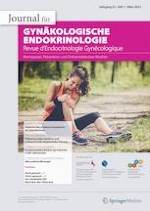04.03.2022 | Prävention
Hormonelle, neuromuskuläre und anatomische Ursachen für die erhöhte Inzidenz von Rupturen des vorderen Kreuzbands bei Sportlerinnen
Erschienen in: Journal für Gynäkologische Endokrinologie/Schweiz | Ausgabe 1/2022
Einloggen, um Zugang zu erhaltenZusammenfassung
Frauen haben ein erhöhtes relatives Risiko, eine vordere Kreuzbandruptur zu erleiden. Die Gründe hierfür sind multifaktoriell und beinhalten unter anderem anatomische, neuromuskuläre und hormonelle Faktoren. Dieses Risiko lässt sich durch dezidierte Präventionsprogramme, die insbesondere darauf abzielen, die neuromuskulären Voraussetzungen zu verbessern, reduzieren. Insgesamt ist die Datenlage sehr heterogen und lässt insofern nur bedingt Rückschlüsse auf die tägliche Praxis zu. Evidente Daten zu erhalten und sinnvoll aufgebaute Studien zu erstellen, erscheint aufgrund der vielschichtigen Einflussfaktoren schwierig. Eine Möglichkeit, eine höhere Qualität bezüglich der Literatur zu erhalten, sind nationale oder internationale Register, wie sie z. B. in manchen skandinavischen Ländern bereits implementiert sind.
Anzeige
